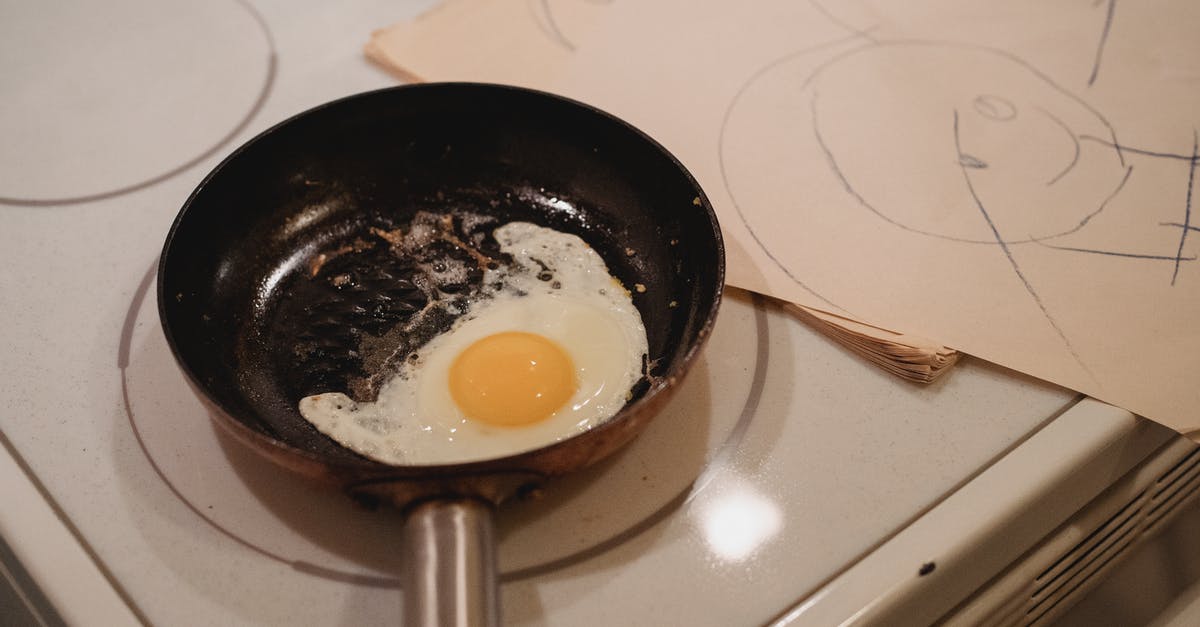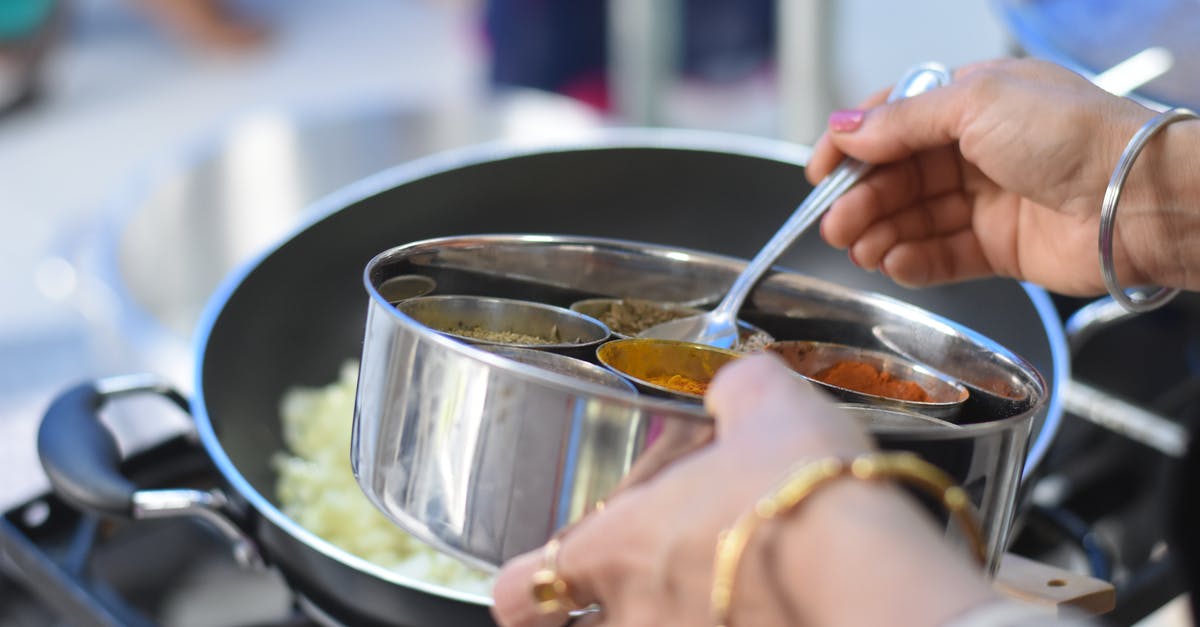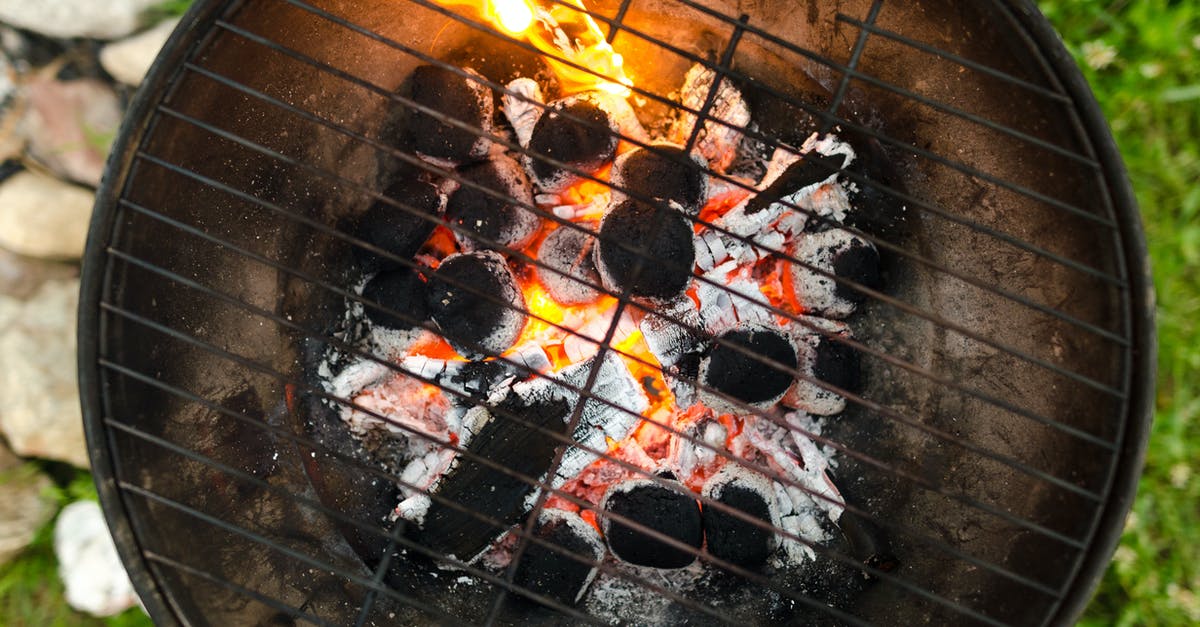How to heat up a pan on an induction burner?

When it comes to a cast-iron skillet, the benefit of using traditional methods is that if you want a super hot pan, you heat it for a long period of time before adding fat to the pan. The instructions say never place an empty pan on an induction burner. So for me adding oil at the beginning was non-sensical, Within a very short period of time the oil was smoking but the pan itself was cold except for the bottom. So how do you get a screaming hot cast iron pan before adding any fat?
Best Answer
The instructions say never place an empty pan on an induction burner
"Never" is a strong word. Too strong.
Of course, you deviate from the manufacturer's instructions at your own risk. But as long as you are careful to not cause harm to the pan or the burner, it should be fine.
The main risk to the burner is overheating the pan, which then gets hot enough that the heat coming from the pan back to the burner is too much. Any decent burner should include a thermal cut-off feature in its design though. The most likely outcome here, at least if you don't do it over and over again, is that the burner simply will turn off. Not a desirable outcome, but at least you can recover from it.
The main risk to the pan is to heat it too quickly, rather than too much, with the heat gradient causing the metal to warp. See e.g. Do induction cookers increase risk of cracking cast iron?. How big a risk this is depends on how powerful the burner is, and how high you set the power.
An induction burner can indeed heat a pan very quickly, and it's tempting to take advantage of that. But if you're heating up an empty cast iron pan to sear something, it will pay to be patient. A radiant electric or, especially, a gas burner heat the area around the pan to a significant extent, which allows the whole pan to heat somewhat more evenly. With the induction burner, you need to let the heat move from the bottom of the pan to the sides by heat conduction through the metal itself, which takes more time.
Note that while cast iron is immune to permanent damage to the finish from high heat that is a risk with other types of pans, especially non-stick surfaces, you can still burn off the seasoned coating if you leave the empty pan at too high a heat for very long. It's simple to fix, just by re-seasoning the pan, but it's certainly inconvenient.
So…go ahead and heat up the empty pan on the induction burner. But increase the power gradually, allowing the sides of the pan to heat up along with the bottom, until you get the whole pan at a suitable temperature.
(For what it's worth, the main issue is the health of the pan. As far as actually cooking goes, if you're just searing or frying something, it doesn't matter very much if the side of the pan are still cold. You're not using the side to cook, so it can be whatever temperature it winds up at, as long as the bottom of the pan is hot enough. Though, keep in mind that having heat in the side helps as a reservoir of heat to reduce the temperature drop of the pan surface when you put something in it.)
Additional reading:
Wikipedia: Induction cooking
Can I heat an empty pan on induction?
PreHeating for High Heat Cooking w/Induction?
Pictures about "How to heat up a pan on an induction burner?"



Does induction heat the entire pan?
Even cooking at home can be quite inefficient: you're wasting energy heating the cooktop and (in the case of a stove with a roaring gas flame) the air all around your pots and pans. With induction cooking, the heat is produced in the pan, not the cooktop, and much more of the energy goes into the food.How do you make normal pans work on an induction hob?
Just place a magnet (a fridge magnet will work for this) on the bottom of the pan. If the magnet sticks, then the bottom of the pan is made from ferrous metal and will work on an induction hob. If it doesn't, it won't. You can also check your pans for the induction compatible symbol, which looks like a coil of wire.How do you heat an induction cast iron pan?
You need to preheat your oven to 350\xb0Fahrenheit, then leave your pan to bake upside down on the top shelf for at least one hour. This gives your cast iron the protective seasoning it needs. Using cast iron cookware on induction stoves can be a very effective way to cook.Can you put hot pans on induction cooktop?
Hot pans taken directly from an oven can be placed on a glass cooktop. This can be done in order to finish cooking, or to set the dish aside to cool. For Induction cooktops, ensure the pan is induction compatible, as the burner will turn on if it is. See also, Use Cooktop as Trivet.How to Use a Non-Induction Cookware on Induction Cooktop
More answers regarding how to heat up a pan on an induction burner?
Answer 2
You can certainly heat an empty pan on an induction cooker, I have done it a lot of times. I suppose the manufacturer forbids it because it is very easy to overheat the pan, creating a fire risk.
The sensor won't save you here - on induction, the pan gets hot first (and very fast), and before that heat warms up the glass plate and then the sensor below it, a good iron pan can cheerfully get to a bright red glow (speaking from experience here - the Internet tells me it must have been above 600 C for that). If you don't cause a fire in that situation, you can get badly burned when you reach for the handle. Adding water at that point will probably result in a cloud of steam hot enough to burn your face, while adding oil might cause super hot splashes or a flash fire. If you are using an enameled vessel, you might damage the enamel (and besides, you will have more difficulty recognizing the problem, because you cannot see the glow), and if you are using something thinner than cast iron, such as blue steel, your pan might warp permanently, seeing how tiny the coils in home induction units are. If you have the misfortune of using an induction-ready sandwich bottom pan with an aluminum layer, you may melt the aluminum, at least damaging the pan.
Of course, this overheating needs some time to happen, even at high settings. So you can actually preheat an empty pan, if you take responsibility for not letting it overheat. This basically means giving it your undivided attention, and recognizing when it is time to add the food. If in doubt, use an infrared thermometer.
Sources: Stack Exchange - This article follows the attribution requirements of Stack Exchange and is licensed under CC BY-SA 3.0.
Images: Kamaji Ogino, Gagan Cambow, Lukas, Teona Swift
